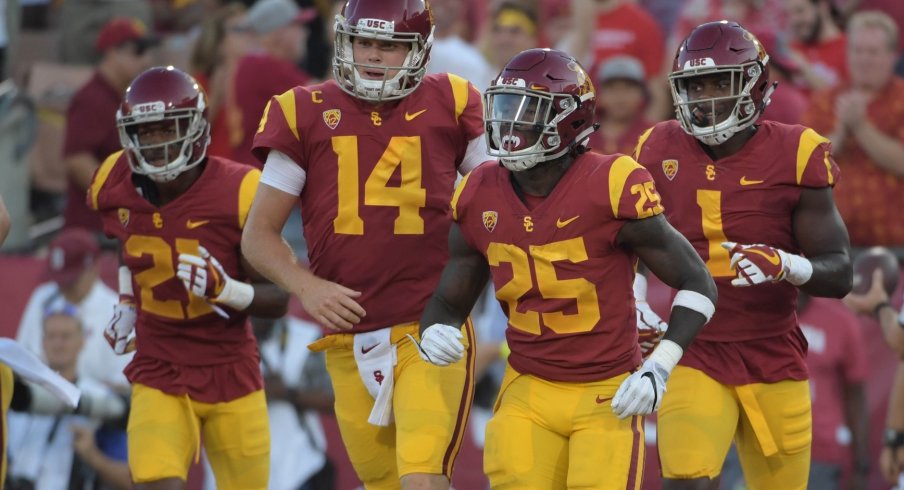Three-star in-state linebacker CJ Sanna commits to Ohio State.
How many current members of the USC football team can you name?
Don't feel bad if 'Sam' and 'Darnold' are the only words currently coming to mind. Despite a top-ten finish for the second consecutive year, few in the college football world outside of the Pac-12 can tell you much about the Trojans.
Darnold, of course, entered the 2017 season as not only a Heisman favorite but as the expected top pick in this spring's NFL draft, and it's easy to see why. The southern California native certainly looks like a blue-chip pro prospect, listed at 6'4" and 220 lbs while possessing above-average athleticism for the position.
Many fans caught their first glimpse of the SC quarterback in last January's Rose Bowl, as the then-freshman threw for 453 yards and five touchdowns in a wild 52-49 shootout win over Penn State. Though he attempted 53 passes that afternoon in Pasadena, it was clear that SC had yet another special signal-caller on campus as Darnold showed an innate ability to extend plays and make throws downfield once the pocket broke down.

But although Darnold is mentored by head coach Clay Helton and offensive coordinator Tee Martin, both of whom are holdovers from the Lane Kiffin era in Los Angeles, viewers of last year's Rose Bowl were likely surprised to see the Trojans operating an offense that looked far more spread than the pro-style systems run by Matt Leinart, Mark Sanchez, or Matt Barkley. When Ohio State fans tune in to their Cotton Bowl matchup with USC in 18 days, they'll see an offense that looks far more like the one they're used to seeing each Saturday than the ones they see on Sundays.
Like their former boss, Helton and Martin have melded the best of both styles, using spread personnel and formations to execute NFL-style game plans built around exploiting individual matchups. The duo does an excellent job of identifying defensive tendencies and dialing up route concepts that exploit the talents of the Trojans' dynamic receiving corps.
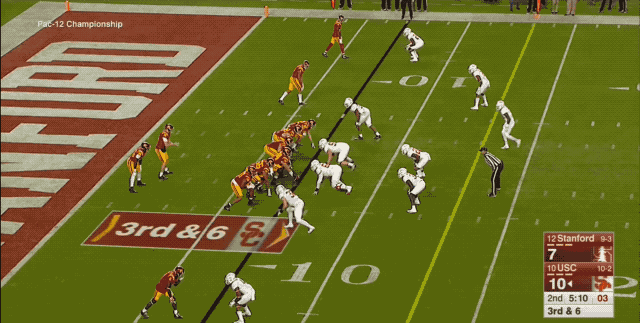
While Darnold often seems capable of handling the new responsibilities handed him each week, the SC staff helps by including all kinds of pre-snap motion, forcing the defense to show its intentions early. Once the ball is in his hands, the sophomore has all the tools to distribute it anywhere it needs to go, completing 28 throws of 20 yards or more this season.
Like a true, pro-style offense, the Trojans will tweak well-known passing concepts week-to-week in hopes of exploiting a likely advantage. For instance, though every team in America has a version of the Snag (aka Spot) concept in their playbook, Helton and Martin made a subtle change to remove the triangle stretch on the outside, opting instead to attack the space in the middle of the field between two deep safeties.
Given that they aren't tied to any specific system or ideology, the USC coaches have adopted numerous concepts made famous elsewhere, such as the Mesh concept with a middle hook originally developed in St Louis by Mike Martz, but made popular by Chip Kelly.
While Ohio State also relies heavily on this concept to set up J.T. Barrett with easy throws to get the ball to his playmakers at receiver, the Trojans like to use it to attack the edges, sending one of their many explosive athletes up the vacated sideline on wheel routes. Not only does Darnold have the arm to make these throws with relative ease, there are plenty of athletes on the roster he trusts to make a play.
Seven Trojans have caught at least 10 passes this season, though junior Deontay Burnett (#80), freshman Tyler Vaughns (#21), senior Steven Mitchell Jr. (#4), and sophomore Michael Pittman Jr. (#6) are clearly Darnold's favorite targets. Additionally, freshman running back Stephen Carr (#7) is a dangerous receiver who could make the Buckeye linebackers' time in Dallas miserable if they aren't prepared to tail him in man-coverage.
But although Darnold's name is certainly atop the cardinal and gold marquee, junior running back Ronald Jones II is as responsible for the Trojans' success in recent years as anyone. A three-year starter, Jones has amassed over 3,500 rushing yards and 38 touchdowns in his Trojan career, relying on a zone scheme very similar to the one run by Urban Meyer's offense.
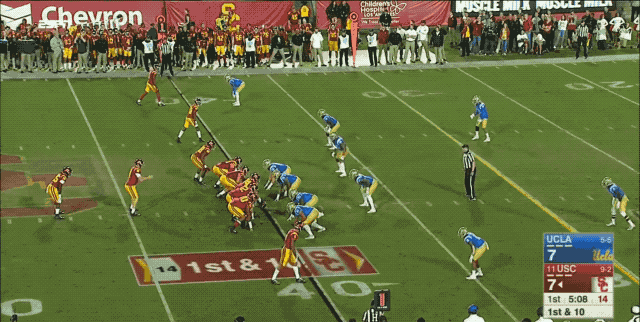
Much like the Buckeyes, the Trojans have added a number of relief passing routes to rush concepts, looking to keep defenses from selling out to stop the run.
But while Ohio State relies on simple bubble screens and flat routes to stretch defenders horizontally, the Trojans give Darnold more responsibility by often asking him to read a two-man route concept like a slant-flat combination instead of running for himself in the option game.
Darnold is excellent at making the right read in these situations, proving to be deadly in the red zone when defenses often send additional rushers or cheat in hopes of making a negative play.
In fact, blitzing Darnold seems to be the worst thing a defense can do, as he not only does a good job of identifying when defenses bring extra pressure, he gets the ball out on quick, three-step routes like slants, hitches, and outs accurately.
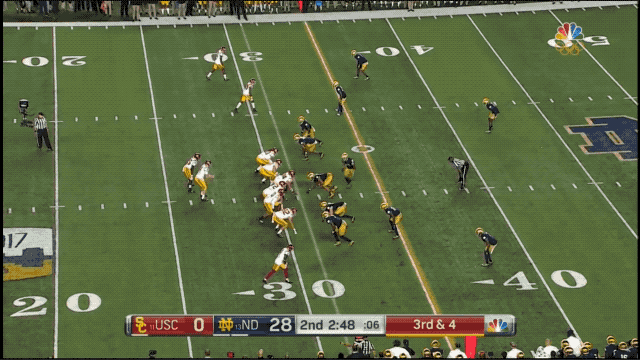
So, to recap, USC has a bunch of talented skill players, a scheme to get them the ball in a multitude of ways, and the ideal quarterback conducting the entire production. But even though the two units may share some similarities, there's one clear difference between the Ohio State offense and their Cotton Bowl opponent.
Urban Meyer has often said he runs "an offensive line-driven program," but the same can't be said for Helton's Trojans. Nearly all of USC's offensive stumbles this season can be traced to issues up front, leaving one to only wonder what kind of numbers Darnold and Jones could've put up with better protection.
Though they rank in the top 30 nationally with an average of 5.00 yards-per-carry, the Trojans struggled mightily to move the ball on the ground against Notre Dame and Texas, both of whom feature defensive fronts that are far more physical and talented than what SC is used to seeing in the Pac-12. The Irish and Longhorns found success primarily with interior defensive linemen occupying multiple blockers, disrupting the crucial combination blocks necessary for success in zone runs.
But the USC offensive line has also been prone to allowing unexpected penetration as well, allowing countless plays to end prematurely and stall drives.
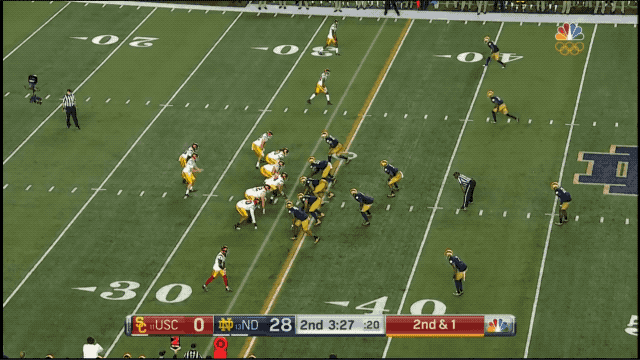
These issues aren't limited to the running game, either. The Irish limited Darnold and the Trojan passing game by rarely sending extra rushers, even on third down, relying instead on their three down linemen to break down the pocket while dropping eight into coverage.
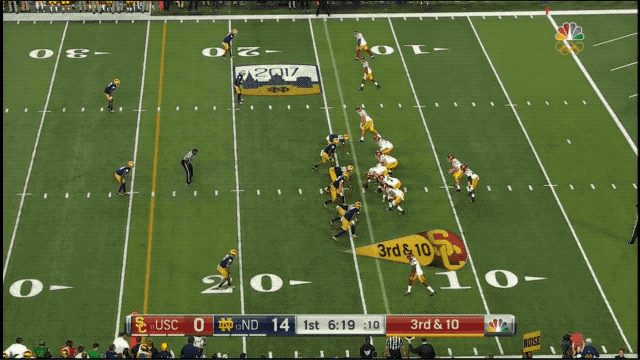
Though Darnold can be at his best when plays break down like this, he also tends to force things in these situations, trying to make plays that aren't necessarily there. While he relies on his speed and quickness to make plays with his feet when he can, he tends to force the ball into windows that aren't there if he's unable to escape a collapsing pocket.
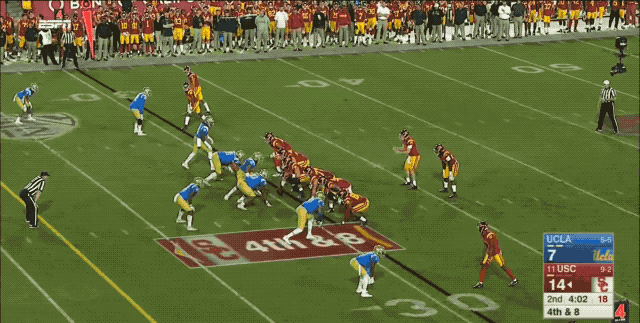
While they won't be able to simply rely on star cornerback Denzel Ward to take away the opposing passing game the way they have in recent weeks, the Buckeyes will have a major advantage when the two sides line up in AT&T Stadium. The Ohio State defensive front is deeper and more talented than any such unit the Trojans have faced since their season-opening 52-6 loss to Alabama to open the 2016 season.
The OSU Rushmen are used to having such praise, but for the reasons shown above, this is a perfect matchup for them, as coordinator Greg Schiano won't have to over-complicate the responsibilities of the back-seven. Instead of feeling the need to mix up coverages in an effort to confuse Darnold, Schiano's troops should be allowed to stay in their base, Cover-1 man-scheme and Quarters matchup zone, knowing the four down linemen should be able to make the QB's evening a miserable one.
All too often, midwesterners get defensive about the stereotype of big, corn-fed linemen going up against the California-cool skill players found on the West Coast. But although the Buckeyes still have plenty of speed and talent on the outside to hang with the Trojans, this classic, Rose Bowl-style matchup will be decided in the trenches, and that's a good thing for Ohio State.
